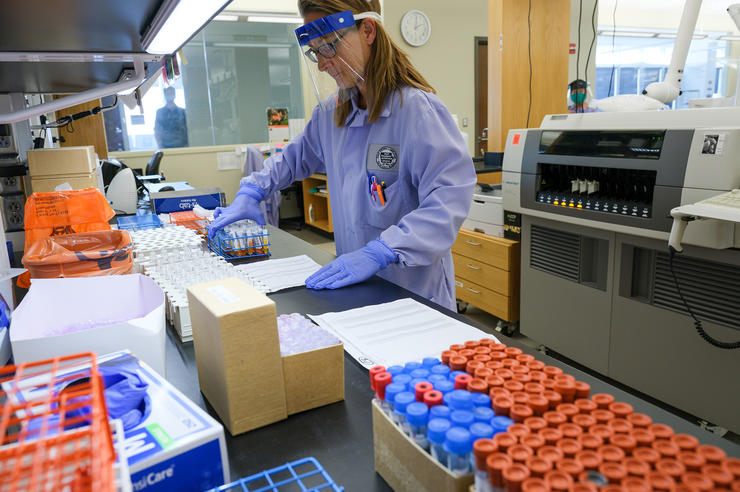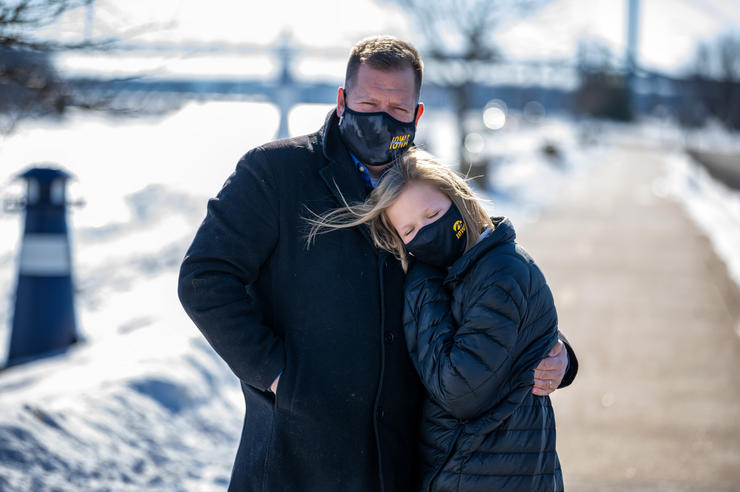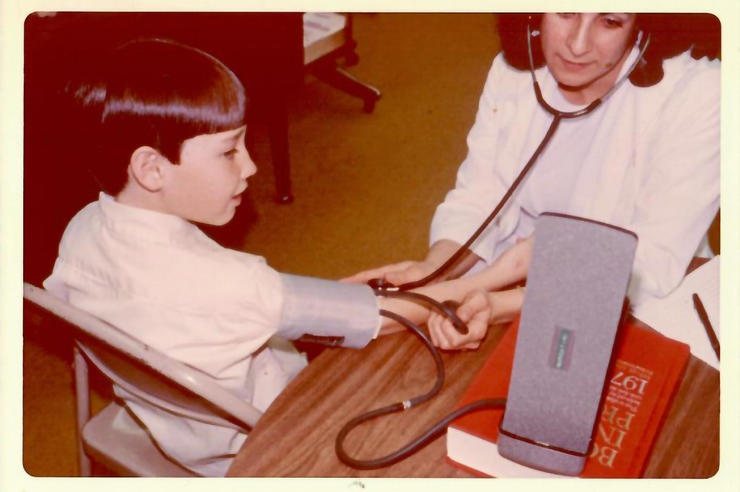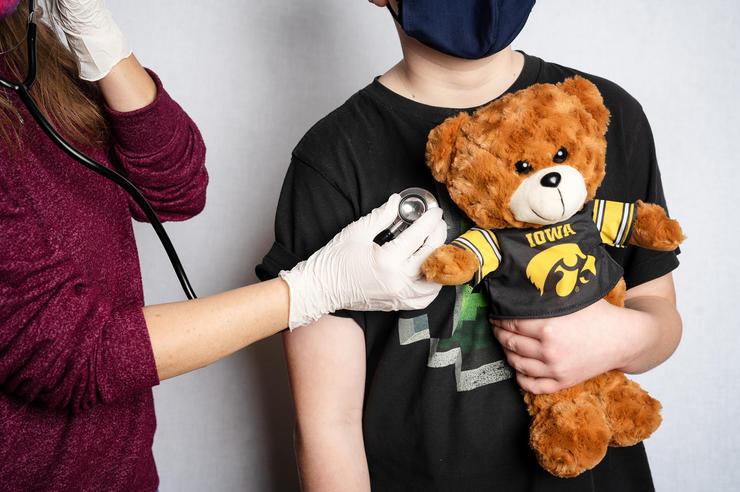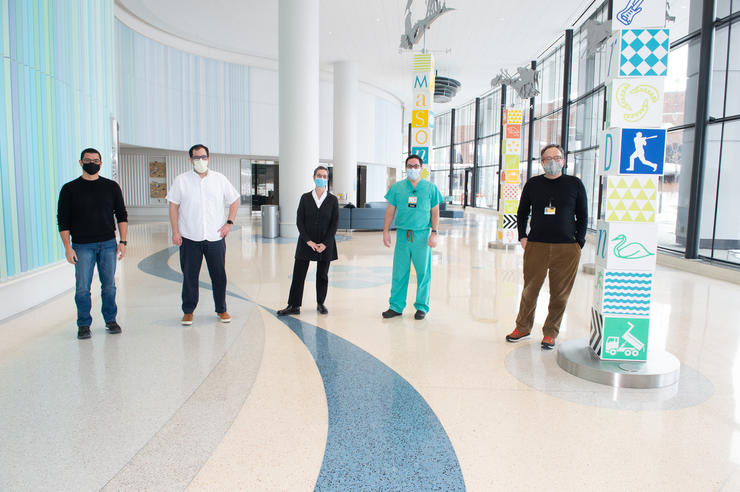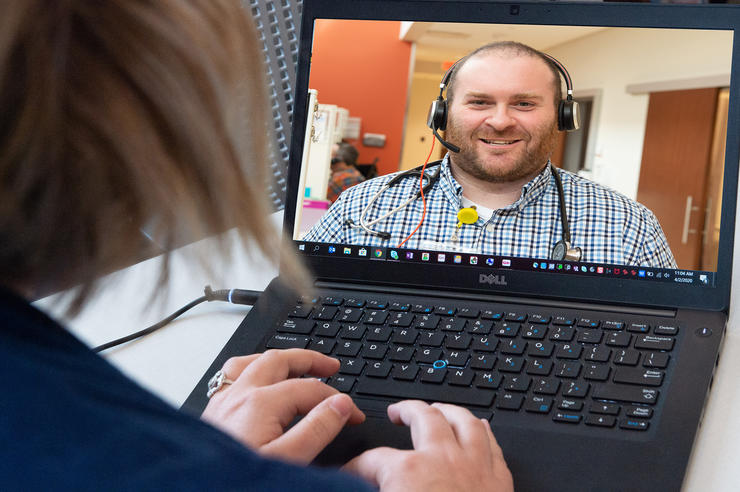Helping families navigate education technology
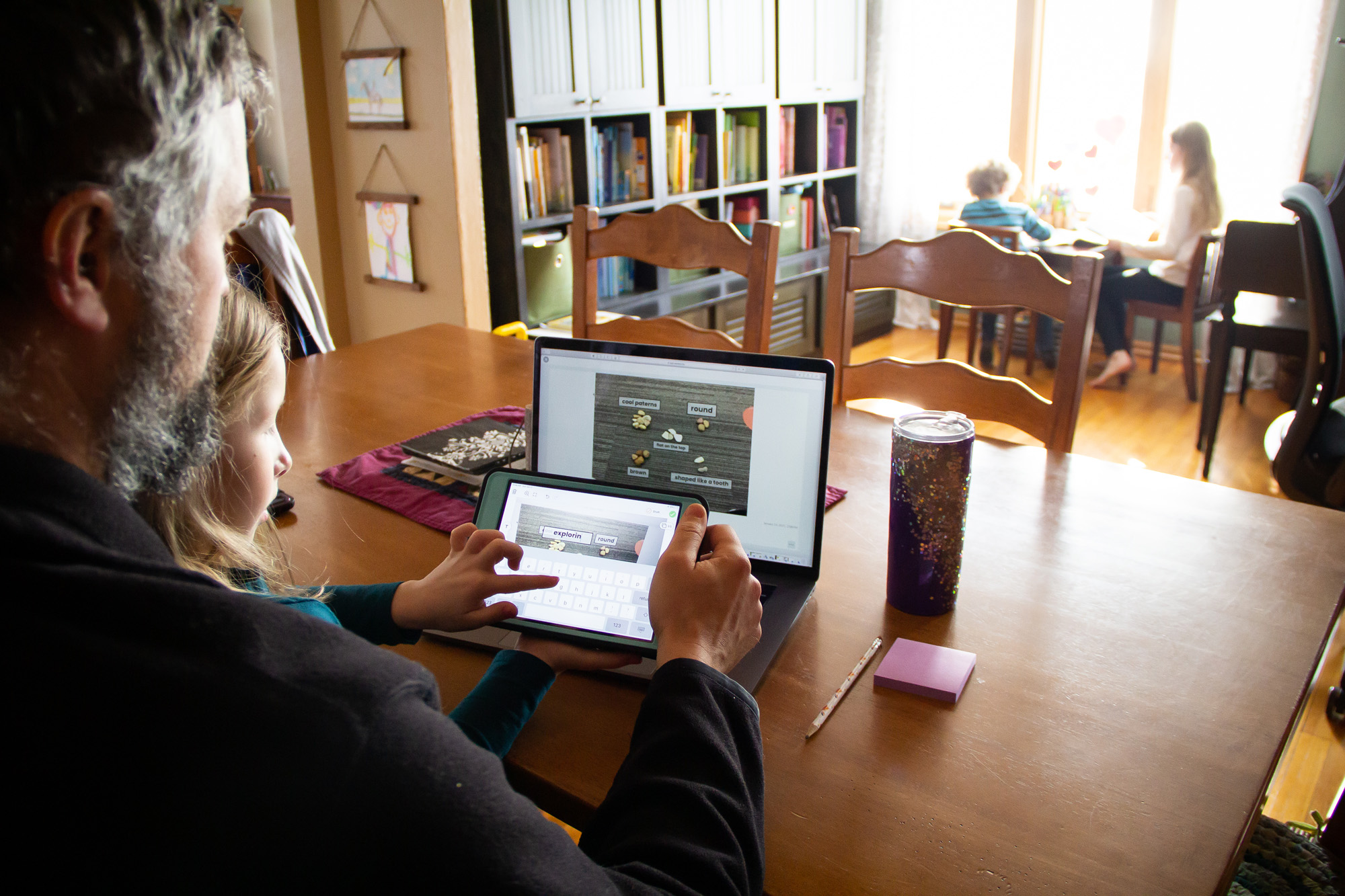
Kate Magsamen-Conrad’s third-grader and seventh-grader have been attending school online for the 2020–21 academic year. While her older child has been fairly self-sufficient, her third-grader has needed more help managing virtual classes and the digital platform on which contemporary schoolwork is completed and shared.
Even though the University of Iowa associate professor in communication studies—who teaches her own virtual classes—is no stranger to much of the technology used for online education, it still took a little work to learn the platform and help her daughter.
Magsamen-Conrad, who studies information management and technology adoption, says for parents who have less “technological capital” than her, helping their children navigate online education can be very difficult—if not nearly impossible.
“There are so many assumptions about what people can do with technology,” Magsamen-Conrad says. “It’s said that 80% of Americans own a smartphone, but owning a smartphone is not the same thing as using a smartphone, which is not the same as using a smartphone efficaciously. And which is definitely not the same thing as using a Chromebook to operate the classroom app Seesaw. In some situations, you’ve got parents who have never touched a keyboard before helping their kids who potentially have never touched a keyboard before.”
In an effort to help bridge technological gaps, Magsamen-Conrad and her fall capstone class partnered with the Iowa City Community School District (ICCSD) to create resources to guide families through online schooling.
The students developed a class that can be taken as a continuing education course by those who work with children, such as day care workers, and an open-source guidebook geared toward Seesaw that can be used by parents in districts across the country.
The guide, Surviving Seesaw—You Got This: Technological Capital for Online Learning, is currently available for free on Pressbooks. Magsamen-Conrad also is working to make it free on Amazon and publish on other platforms such as iBooks.
Joan VandenBerg, youth and family development coordinator for the Iowa City Community School District, and cultural liaisons within the district worked with the students to help them understand the hurdles that different populations within the community face when it comes to helping their children with their education.
“The digital divide isn’t new,” VandenBerg says. “We’ve long had to deal with issues like online registration and signing up for free and reduced lunch. But when COVID came along, it became an issue of access to instruction.
“The stakes are high. This is your kids’ learning, so anything we can do to break it down into bite-size pieces and reduce anxiety is welcome.”
Magsamen-Conrad says how much “technological capital” a person has can vary wildly.
“Think of it like a bank,” Magsamen-Conrad says. “You need X number of dollars to even get into this whole online education system. What are those dollars? Wi-Fi is one. Understanding how to set up the Wi-Fi is another. Then you need a device to access the internet, and know how to use a keyboard. Knowing how to use all these different pieces and processes make up a person’s bank of technological capital.”
That broad continuum can sometimes make it difficult to effectively walk people through a digital process.
“People often do not understand how much digital privilege they have until they work with people who don’t have tech capital,” Magsamen-Conrad says. “It’s inconceivable to them because it’s just so easy when you have it at your disposal. Your brain can’t outline all the steps of where things can go wrong. We see a lot of that when it comes to technology in our society.”
Emma Hayes, a December 2020 communications studies graduate with a certificate in leadership studies, experienced this firsthand during the capstone class.
“We as a generation are fortunate, especially at the University of Iowa, to just know terms like ‘right click’ or ‘go to this URL,’” Hayes says. “I think one of the most eye-opening things for me was to see how far back we had to take a step to really help. It wasn’t just a matter of not being able to navigate a new platform like Seesaw. It was more than that. Work and school depend on the assumption that everyone has access to Wi-Fi, and that’s not always the case. There’s a big disparity between not only understanding how to use these resources but also in access to the resources. We also had to figure out to help people just connect to Wi-Fi.”
“The stakes are high. This is your kids’ learning, so anything we can do to break it down into bite-size pieces and reduce anxiety is welcome.”
Magsamen-Conrad says tech capital disparities don’t only exist among older generations.
“People think college students know everything about technology, but that’s not always true,” Magsamen-Conrad says. “Just because you’ve grown up with technology doesn’t mean that you’re a whiz at every facet of technology. Or that you have all those pieces of technology at your fingertips.”
The open-source guide, Surviving Seesaw—You Got This: Technological Capital for Online Learning, is currently available for free on Pressbooks. Magsamen-Conrad also is working to make it free on Amazon and publish on other platforms such as iBooks. Along with the guidebook, the UI students developed a class that can be taken by people who work with children, such as child care providers.
VandenBerg is working through the Iowa Child Care Resources and Referral Center to allow child care providers to get continuing education credit for the course.
“We’ve already shared some of these resources with nonprofits who work with parents,” VandenBerg says. “They are going to be really fabulous resources for families and day care providers.”
Magsamen-Conrad says her students incorporated the communication studies theories they had learned throughout their UI education to develop the resources, such as the unified theory of acceptance and use of technology and verbal person centeredness.
“Verbal person centeredness (VPC) is a branch of communication theory that examines how to speak to people in order to generate satisfying support,” Magsamen-Conrad says. “The students worked into the curriculum phrases to use that were highly person-centered so that in addition to providing technical support, we were providing emotional support as well.”
Hayes says she appreciated the opportunity to put skills they had learned in classes over the years into action. The Des Moines resident also says she has already put those skills to work in her new job as an internal sales specialist with Athene Annuity and Life Company.
“We worked on how to formulate communication messages that are centered around the person and not just the problem,” Hayes says. “And that’s something that I can and do apply to my job. I talk to people on the phone and sometimes they have issues with our system and we have to provide tech support to them. It’s always nice when it clicks for them.
“It was incredible that in this capstone project we got to create something that can help that lightbulb go on for someone else so that they feel better equipped to succeed and help their children succeed as well.”
Kaylee Hendrix, a Donnellson, Iowa, native who graduated in December 2020 with a degree in communication studies and certificate in writing, says everything she learned in the class and working with the ICCSD has been applicable in her job as a justice advocate with Iowa Legal Aid through the AmeriCorps program.
“We serve low-income, elderly, and minority Iowans in the age of work-from-home,” Hendrix says. “Because of that, every weird struggle we have helping people navigate a new online world has become applicable to my everyday life. I’m making how-to guides and videos and using lots of VPC skills with frustrated clients. Honestly, I couldn’t have done it without the experiences we had last semester, and I’m eternally grateful for the work we were able to do.”
VandenBerg, who has worked with Iowa students in the School of Social Work in the past, says developing these important resources would not have happened without the partnership with Magsamen-Conrad and the Iowa students.
“This is one of those things where you say, ‘Wow, that’s a great idea, but there is so much else that needs to get done,’” VandenBerg says. “We’re so lucky to have these professors and students in our community, and I’m so happy we made the connection.”
